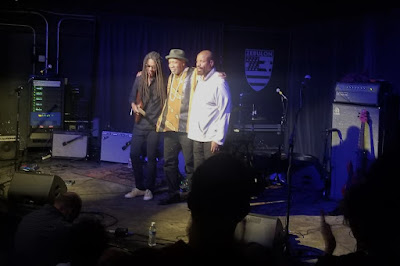A couple of weeks ago, I was doing some presentations for an Art Collectors program in Los Angeles for the lifelong learning Road Scholar/Elderhostel organization and briefly mentioned that Gordon Getty, son of the (in)famous oil tycoon and collector J. Paul Getty, is a classical music composer. During a break, one of the participants, Fred Tompkins, walked up and asked about this and then mentioned that he was a flutist and composer.
As we talked, I learned that Fred has had a long and interesting career working with jazz and classical elements in his work, including the composition of the song "Yes" on the Poly-Currents album by the late, great drummer Elvin Jones, best known for his work with John Coltrane. This is a record I've long enjoyed, so it was great to meet Fred, who is based in St. Louis which has an incredible jazz history as a Mississippi River crossroads for all kinds of music, and, briefly, talk about his work.
That led me to purchase his 2006 recording, Curve Extended, which is a fascinating mixture of textures through varied instrumentation and small group combinations, as well as having notated and improvised components. Among the more interesting pieces is the title track, for which Tompkins wrote that it "employs the use of multiphonics" as being "in the real of new techniques," through the simultaneous playing of a series of notes.
The two "Con Moto" pieces are also notable for his use of an E-mu sampler, while the last two works, "Coming Together" and "La America" feature the poems and readings of them by Michael Castro an contributions by Debby Lennon on the first of these. Excellent work is provided on guitar by Dave Black, drums by Charlie Dent (NOT to be confused with the Pennsylvania politician), and soprano sax by Paul DeMarinis.
I'm always about supporting under-recognized and less-appreciated musicians of all kinds and those with an interest in jazz and classical connections should definitely check out Fred Tompkins and his very interesting work.
.jpg)










.jpg)



